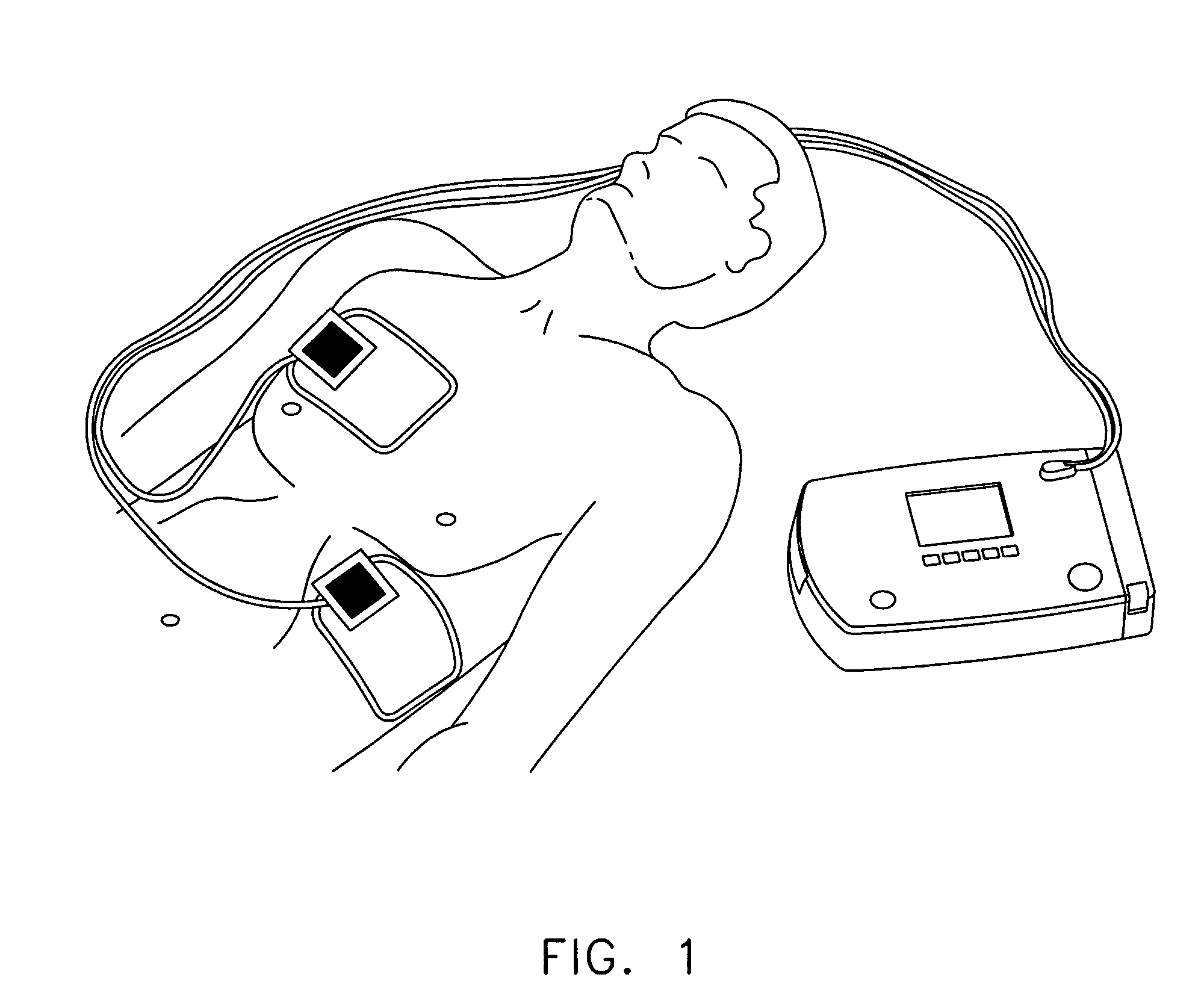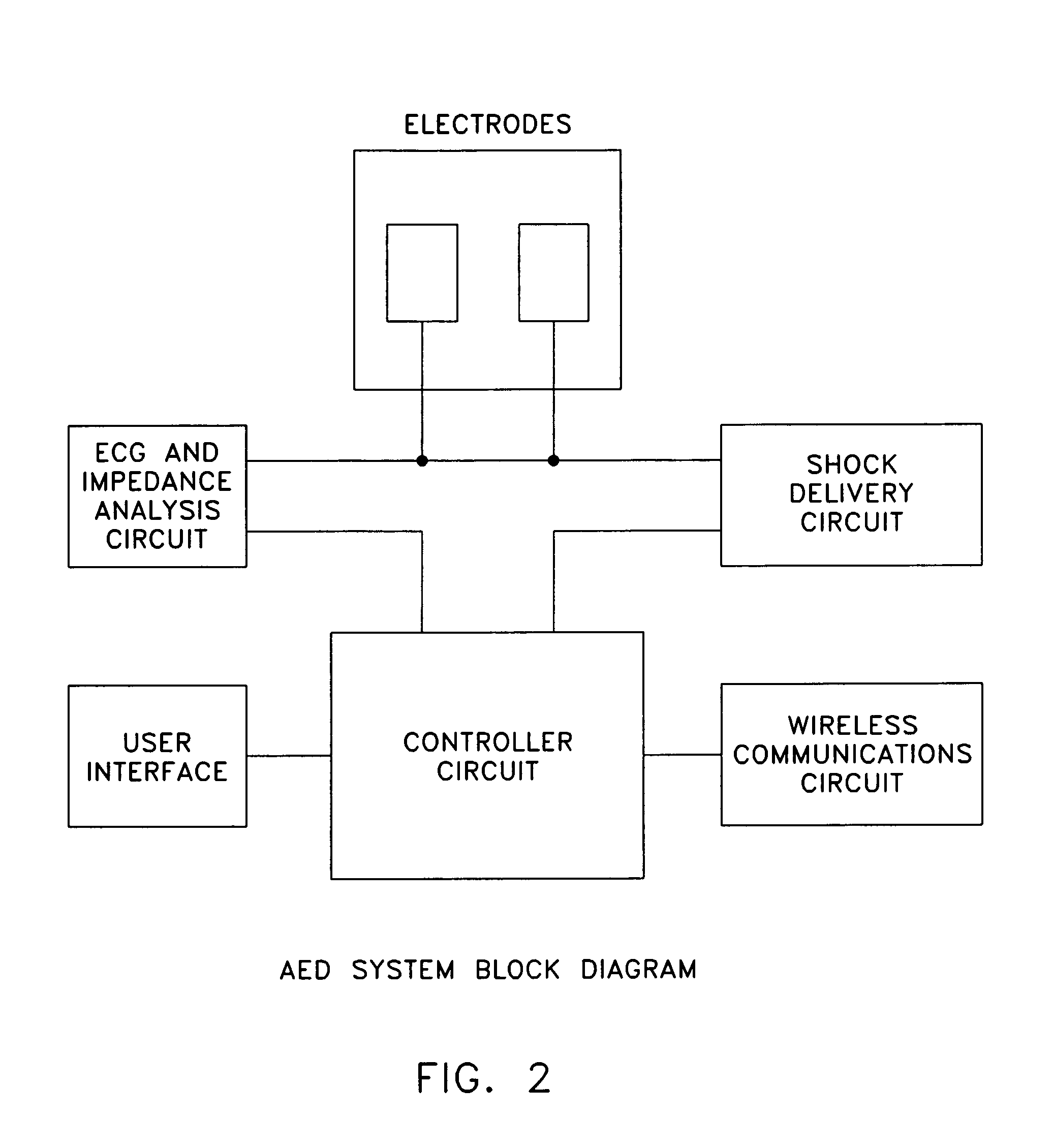Automated external defibrillator (AED) system with multiple patient wireless monitoring capability for use in mass casualty incidents
a wireless monitoring and automatic technology, applied in the field of automatic external defibrillators with patient monitoring capability, can solve the problems of loss of consciousness, death, lack of blood flow to the brain and other organs, etc., and achieve the effect of facilitating interaction with the user
- Summary
- Abstract
- Description
- Claims
- Application Information
AI Technical Summary
Benefits of technology
Problems solved by technology
Method used
Image
Examples
Embodiment Construction
[0079]In accordance with the present invention, the new AED is provided with monitoring capability. This permits the user to monitor the patient's condition after resuscitation or in the event the patient is breathing and does not require a shock. Among other things, the new AED may be used to monitor the patient while the patient is being transported to the hospital.
[0080]A typical connection of the AED to the patient is shown in FIG. 1.
[0081]The present invention comprises an Automated External Defibrillator (AED) as shown in the high level system block diagram in FIG. 2.
[0082]A more detailed block diagram of the new AED is shown in FIG. 3.
[0083]The AED also contains the necessary components for defibrillation including, but not limited to, a battery pack, capacitor charger circuit, high-voltage capacitors and an H-bridge circuit (see FIG. 3).
[0084]The defibrillator also contains several other components such as, but not limited to, a real-time clock, analog-to-digital converters,...
PUM
 Login to View More
Login to View More Abstract
Description
Claims
Application Information
 Login to View More
Login to View More - R&D
- Intellectual Property
- Life Sciences
- Materials
- Tech Scout
- Unparalleled Data Quality
- Higher Quality Content
- 60% Fewer Hallucinations
Browse by: Latest US Patents, China's latest patents, Technical Efficacy Thesaurus, Application Domain, Technology Topic, Popular Technical Reports.
© 2025 PatSnap. All rights reserved.Legal|Privacy policy|Modern Slavery Act Transparency Statement|Sitemap|About US| Contact US: help@patsnap.com



